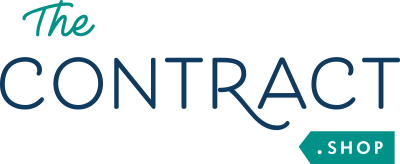Your Cart is Empty
Shop confidently - 14-day no-hassle return policy
Shop confidently - 14-day no-hassle return policy
Shop confidently - 14-day no-hassle return policy
Unfortunately, it’s waaaaaaay too common for someone to just pop a keyword into Google and grab a flashy image to use for their social media or blog post. Usually, if asked about where the image came from, the culprit says “Oh, I just found it on Google,” and it’s obvious they made no attempt to find the original creator.
As a photographer, this is probably one of your biggest fears… that someone else is going to use your photos to support their own agenda without giving the credit due—or worse, making money off of your hard work.
Do you even have the right to protest in this kind of situation? What does having a copyright mean, and how do you go about getting one to protect your work?
Copyright law protect original works of art, literature, music, inventions… in your case we’re talking specifically about photos you’ve visually composed, shot, and (possibly) edited after the fact. The really nice thing is that once the photo is saved securely on the memory chip inside your camera, you own the copyright, even if you don’t put your watermark on it or a © symbol after the fact.
One of the most important things to know is that as the copyright holder, YOU get to make the rules about whether people are allowed to reproduce your work or not.
For example, as a photographer, you’d generally include a copyright release to allow your clients to print their photos off and hang them on the wall… but you’re not releasing your overall copyright to that photo and your rights to use it in different situations. Essentially, you’re giving them a limited use reproduction license.
(Hint, this is where having a contract—spelling out exactly what each party can and can’t do with the photos—is a really good idea!)
Broken down simply—as the sole owner and person in charge, YOU get to decide if your photos are free for anyone to use, or if they have to come and ask permission.
First I want you to take a niiiiiiiiice deep breath and then blow it out while counting to ten. Am I joking? Absolutely not. That initial response to seeing your work stolen is a doozy, isn’t it?
In many instances, small-time copyright infringers either a) are unaware they’re breaking the law, or b) are “inspired” by your work. These are usually the well meaning-but-clueless googlers I mentioned above.
Other times it’s a shady manufacturing group or big, well-known company who has ripped off your work with the hope you’ll either stay ignorant about it or decide it’s too difficult to go after them.
Usually, reaching out and gently letting them know that you’re aware of their “flattery” and they need to stop, or sending a cease and desist letter is enough to set things to rights.
I’ve got an entire guide here on how to deal with these situations… check it out!
As I mentioned above, your work is protected as soon as it comes out of your head into tangible form. So registering your copyright ownership certainly is notrequired.
However, in the event that you find your work being used without your permission, the culpritdoesn’t own up, and you find yourself going to court to prove that you own your work and are owed damages—having a registered copyright is certainlyhandy.
To register a copyright, you’ll need to send a copy of your work, along with an application and filing fee to the United States Copyright office. You don’t have to pay a copyright fee for each and every piece you create, either… you can “batch copyright” multiple pieces under one application.
(Read “Do you need a copyright” for more info on when it’s a good idea to go through this process.)
Sure it sucks to have someone else use your work when you don’t get anything out of the deal, but unless you have a plan, how are you making your work earn its keep instead of just hanging out on your hard drive?
Copyrighting and licensing your artwork, calligraphy, photography, or graphic designs is a fabulous way to bring in a little extra moola and grow your fan following! Check out our quick and easyCalled to Create Workbook to start making passive income.
Comments will be approved before showing up.
